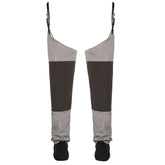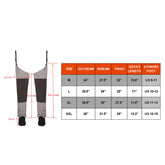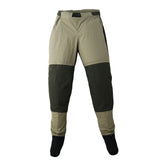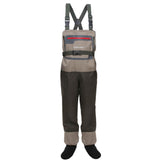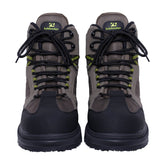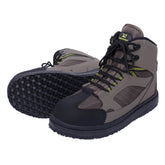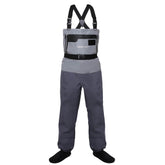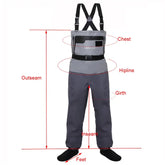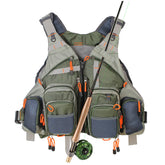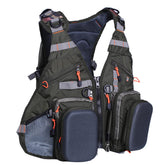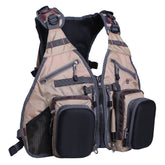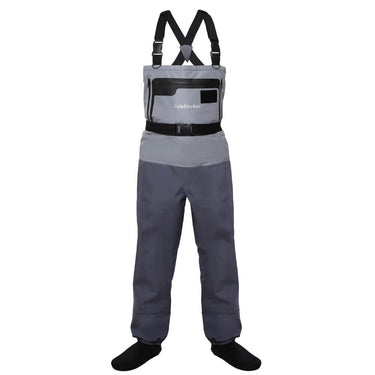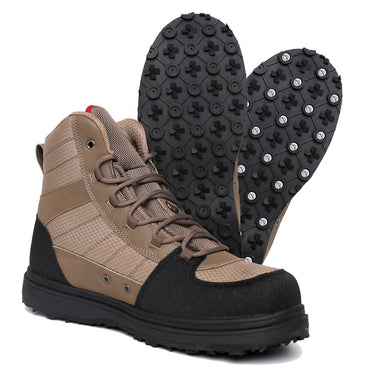Complete Guide to Fly Fishing with the Elk Hair Caddis
The Elk Hair Caddis is a well-known dry fly fishing tool. I would say that most dry fly fishers have some form of pattern tied.
The Elk Hair Caddis became an iconic fly fishing pattern during the 1970s in Yellowstone National Park. It still remains one of the most successful fly fishing patterns in the area.

One of my friends who I frequently fish with often uses the Elk Hair Caddis as his go-to pattern. He would usually tie it on in the morning and fish it all day long. Although he may change it occasionally, he will still use it.
Although I initially thought that the Caddis would only be used for catching fish that are tuned into a specific fly, the truth is that it can imitate a wide variety of insects.
My friend who I frequently fish with often outfishes me. He does so due to two reasons: First, he is a great fisherman, and second, the Elk Hair Caddis is a deadly dry fly.
WHY THE ELK HAIR CADDIS IS GREAT
The way the fly is tied is also one of the reasons why it is so effective. It doesn't have much to it.
The first reason why the Elk Hair Caddis is so popular is that it is hollow. Its ability to sit on the water film gives it a natural look. Another popular adult fly fishing pattern is the Stonefly or Caddis.
The other design features of the Elk Hair Caddis are also very effective. Its palmered hackle is a great trigger in fast water. Its wing case can get a little wet, which can make the pattern look like it is a "drowned" fly. But, in slower runs, this is often the best choice.
The other great thing about the Elk Hair Caddis is that it can be fished as a dry dropper rig. This method is very popular in my local waters. Using a size 16 dry will allow you to cast it with no issues and hold a 2.5mm bead.
One of the biggest issues that I have with the Elk Hair Caddis is that I struggle to see it in low light. This is due to my poor eyesight. One of the ways that I can solve this issue is by tying a small sighter post around the fly.
A LITTLE HISTORY ON THE ELK HAIR CADDIS
Designed and tied by Al Troth, the Elk Hair Caddis was originally intended to be a caddis emerger. However, after using the Elk Hair, it became a dry fly.
Initially, the Elk Hair Caddis was only used by a few anglers. It wasn't until Al started selling it in a fly shop in west Yellowstone that it caught on. The shop, which is called Bud Lilly's Fly Shop, quickly became known for its quality products.
Although there were plenty of competition in that area, the Elk Hair Caddis quickly became a staple in many boxes. It was also very popular in western waters.
Originally, the Elk Hair Caddis was intended to be used as an emerging caddis. However, due to its condition when wet, it can still be used. It can also be used for other species of flies such as the Stonefly and the adult green Caddis.
The Elk Hair Caddis is a single dry fly that is very effective when fished. There are only a few other similar patterns that can imitate its look and performance.
WHAT FISH DOES AN ELK HAIR CADDIS CATCH?
In the past, most patterns were tied with salmon or trout in mind. However, as the sport has grown, other species have started to become more popular. As long as you can imitate what the fish eats, you can still use a fly.
The Elk Hair Caddis has been used to catch various species of fish. Some of these include bluegill, trout, largemouth bass, and saltwater mullet.
For me, the Elk Hair Caddis works incredibly well when used to catch smallmouth yellowfish. I usually use a size 14 or 12 to tie the pattern. I also use a skating fly on the surface to produce great results.
HOW TO SETUP AN ELK HAIR CADDIS
The Elk Hair Caddis can be fished as a dry fly. Depending on your style, you might want to use a 7-14 or 8-foot rod. If you're fishing with a shorter rod, such as a cane or glass, then a double taper floating line is ideal.

Ideally, you'll want to use a long leader as long as you can handle it. However, if you're fishing with a shorter rod, then a tippet of at least 3 to 5 feet is ideal.
If you're using a dry-dropper rig, then a shorter leader is ideal as long as you can avoid getting dragged. This is especially true in pocket waters where you can get close to the fish.
I usually use a tippet of around 5X for my waters. However, if I need to drop to a 6X, I would do so. Your tippet choice will also depend on the type of fish that you're targeting.
WHAT DOES THE ELK HAIR CADDIS REPRESENT
The Elk Hair Caddis was originally tied to the Green Caddis. It can also be confused with a terrestrial or stonefly.
The size of the Elk Hair Caddis can also be used to imitate various insects and spiders that have just fallen into the water.
ELK HAIR CADDIS FAVORITE SIZE AND COLOR

The size of the Elk Hair Caddis can vary depending on the type of fishing that you're doing. For instance, smaller flies tend to get washed away in fast water.
I love the size 16 Elk Hair Caddis because it's versatile and suited for different water conditions.
WHERE TO BUY ELK HAIR CADDIS
If you're not tied to your own flies, then the Elk Hair Caddis from Umpqua is a great choice. The CDC underwing adds a little bit of bugginess to the design.
HOW TO TIE ELK HAIR CADDIS
The Elk Hair Caddis is a simple to tie pattern. It requires good quality hackle and Elk Hair to perform well.
Materials
The free PDF version of this pattern is available below. You can download it by clicking on the picture. It will then lay down on the side of your tying apparatus and use it while you're tying.

The size 14 through 18 Elk Hair Caddis is ideal for most situations. I recommend using darker wings and dark dubbing.
Instructions
1.Secure hook in vise, wrap level thread base, ending at the hook bend.
2.Tie in fine wire
3.Dub the body forward, allowing enough room for the wing to be tied in.
4.Tie in the hackle, thick side first and concave, facing away.
5.Wrap the hackle backward to the rear.
6.Tie off the hackle with wire and wrap it forward. Tie off with thread.
7.Tie in Elk Hair, ensuring the hair holds on top of the hook shank.
8.Tie small head and whip finish.
After you've tied the Elk Hair, run the thread through the Elk Hair stubs to the shank. This will secure it.
ONE LAST CAST WITH THE ELK HAIR CADDIS
The Elk Hair Caddis is a versatile and effective pattern that can be used by both beginners and experienced anglers. It has earned my place among the top ten driest patterns in the world.
It's recommended to learn how to tie the Elk Hair Caddis before you start fishing it. Doing so will allow you to enjoy the pleasure of landing fish on it.
Article refer:
1.Choosing the Best Fly Fishing Flies
2.Fly Fishing with Ant Patterns (Setup, Flies and More)
3.Complete Guide to Fly Fishing with the Elk Hair Caddis
4.Complete Guide to Fly Fishing with the Beaded Caddis Nymph
5.Fly Fish for Bass with Poppers
6.Complete Guide to Fly Fishing with the Zebra Midge (Simple to Tie)
7.Complete Guide to Fishing and Tying the Griffith's Gnat
8.15 Best Flies for Cutthroat Trout (These Flies Work!)
9.Aquatic Fly Fishing Insects
10.Fly Fishing Starter Flies
